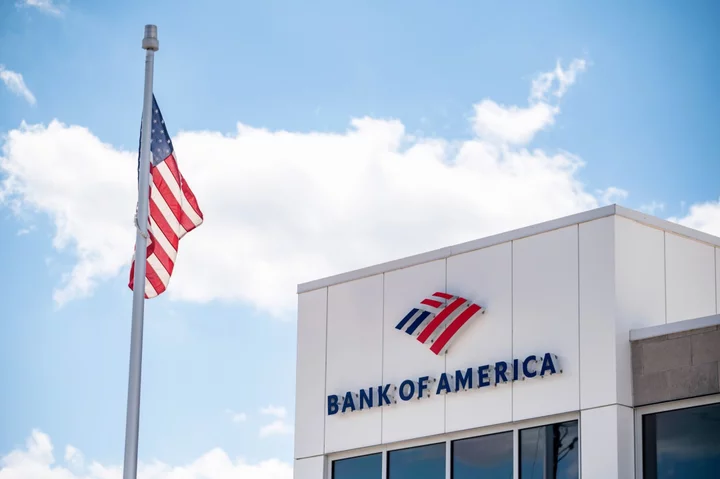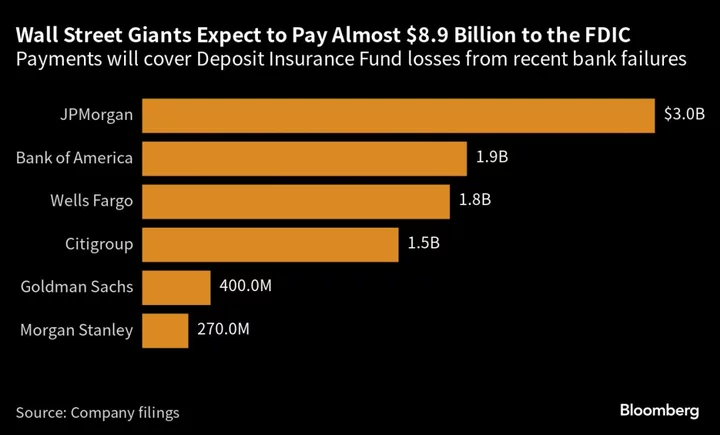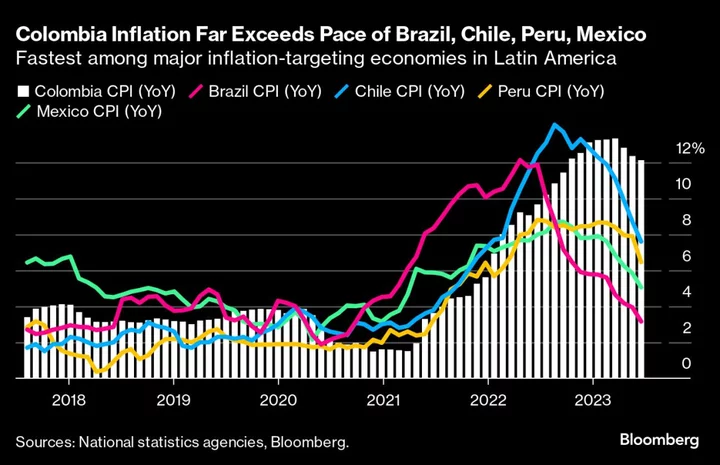Bank of America Corp.’s second-quarter profit soared after its core Wall Street businesses exceeded analysts’ expectations.
The firm’s fixed-income and equity traders delivered a surprise gain, covering a slight miss in expected net interest income. Revenue from fixed-income, currencies and commodities trading rose 18% to $2.8 billion in the second quarter, as clients reacted to changing interest rates, the bank said. That helped the bank top analysts’ earnings-per-share estimates.
“All businesses performed well, and we saw improved market shares, particularly in our sales and trading and investment banking businesses,” Chief Executive Officer Brian Moynihan said in a statement Tuesday.
The results offer another look at how Wall Street fared through a tumultuous a period that included upheaval among regional lenders capped by the failure of First Republic Bank. Last week, JPMorgan Chase & Co. and Citigroup Inc. both posted trading results that beat analysts’ expectations. They also beat estimates for net interest income, and raised their forecasts for the remainder of the year.
Read More: JPMorgan’s Best Quarter Ever Shows Big Banks in Rate Sweet Spot
At Bank of America, net interest income — the revenue collected from loan payments minus what depositors are paid — came in at $14.16 billion, slightly below analysts’ estimates. For the full year, NII is likely to total just above $57 billion, up more than 8% from 2022, Chief Financial Officer Alastair Borthwick said on a conference call with analysts, reiterating a previous forecast.
Challenges in pricing for deposits and migration of customer funds can hurt NII at banks, as customers seek higher yield for their savings. But the country’s largest lenders are attracting new customers, issuing loans that boost their bottom line.
Bank of America’s deposits fell 1.7% from the previous quarter to $1.88 trillion, less than the 3% drop analysts had predicted.
Investment-banking revenue rose almost 6%, better than analysts expected amid signs of a revival in dealmaking. Revenue from equity issuance more than doubled to $287 million, while debt issuance dropped 9.4% to $600 million. Fees for advising on mergers and acquisitions declined 4.3%.
Bank of America’s global-markets business posted its highest first-half sales and trading revenue in a decade, Borthwick said on a conference call with reporters. That growth was achieved “the right way,” benefiting from a pickup in equity capital markets during the second quarter, he said.
Shares of the Charlotte, North Carolina-based company climbed 2.5% to $30.15 at 9:38 a.m. in New York. They’ve declined 8.9% this year, compared with a 17% drop for the KBW Bank Index.
Expenses were higher in the second quarter due to investments in technology and higher Federal Deposit Insurance Corp. and legal costs, the bank said. Non-interest expenses rose 5% from a year earlier to $16 billion. Costs have been a focal point for investors, with persistent inflation putting pressure on spending and spurring wage growth. Analysts had expected a 3.3% increase to $15.8 billion.
Bank of America expects expenses to come down with attrition cutting headcount, executives said. The company is forecasting about $1.9 billion of costs tied to the proposed notice of special assessment from the FDIC to recover losses from the failures of Silicon Valley Bank and Signature Bank.
“We just remain unsure at this point of timing to record that expense,” Borthwick said on the call with analysts.
Bank of America put aside less money than expected for potentially soured loans in the second quarter, signaling expectations for a better economic outlook. The firm set aside $1.13 billion in provisions for credit losses, less than the $1.2 billion analysts expected. That includes $869 million of net charge-offs and $256 million of reserve build, compared with a release a year earlier.
(Updates with executive comments starting in fifth paragraph)









